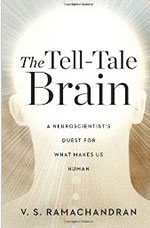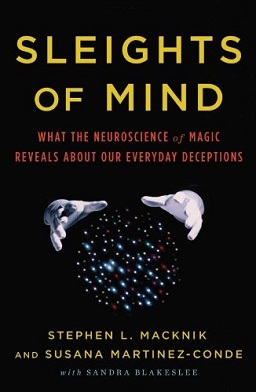
Consciousness, at its simplest, is awareness of internal and external existence. However, its nature has led to millennia of analyses, explanations and debates by philosophers, theologians, linguists, and scientists. Opinions differ about what exactly needs to be studied or even considered consciousness. In some explanations, it is synonymous with the mind, and at other times, an aspect of mind. In the past, it was one's "inner life", the world of introspection, of private thought, imagination and volition. Today, it often includes any kind of cognition, experience, feeling or perception. It may be awareness, awareness of awareness, or self-awareness either continuously changing or not. The disparate range of research, notions and speculations raises a curiosity about whether the right questions are being asked.

Neuroscience is the scientific study of the nervous system, its functions and disorders. It is a multidisciplinary science that combines physiology, anatomy, molecular biology, developmental biology, cytology, psychology, physics, computer science, chemistry, medicine, statistics, and mathematical modeling to understand the fundamental and emergent properties of neurons, glia and neural circuits. The understanding of the biological basis of learning, memory, behavior, perception, and consciousness has been described by Eric Kandel as the "epic challenge" of the biological sciences.

Consciousness Explained is a 1991 book by the American philosopher Daniel Dennett, in which the author offers an account of how consciousness arises from interaction of physical and cognitive processes in the brain. Dennett describes consciousness as an account of the various calculations occurring in the brain at close to the same time. He compares consciousness to an academic paper that is being developed or edited in the hands of multiple people at one time, the "multiple drafts" theory of consciousness. In this analogy, "the paper" exists even though there is no single, unified paper. When people report on their inner experiences, Dennett considers their reports to be more like theorizing than like describing. These reports may be informative, he says, but a psychologist is not to take them at face value. Dennett describes several phenomena that show that perception is more limited and less reliable than we perceive it to be.

Vilayanur Subramanian Ramachandran is an Indian-American neuroscientist. He is known for his wide-ranging experiments and theories in behavioral neurology, including the invention of the mirror box. Ramachandran is a distinguished professor in UCSD's Department of Psychology, where he is the director of the Center for Brain and Cognition.
The neuroscience of religion, also known as neurotheology and as spiritual neuroscience, attempts to explain religious experience and behaviour in neuroscientific terms. It is the study of correlations of neural phenomena with subjective experiences of spirituality and hypotheses to explain these phenomena. This contrasts with the psychology of religion which studies mental, rather than neural states.
Anosognosia is a condition in which a person with a disability is cognitively unaware of having it due to an underlying physical or psychological condition. Anosognosia can result from physiological damage to brain structures, typically to the parietal lobe or a diffuse lesion on the fronto-temporal-parietal area in the right hemisphere, and is thus a neuropsychiatric disorder. A deficit of self-awareness, it was first named by the neurologist Joseph Babinski in 1914. Phenomenologically, anosognosia has similarities to denial, which is a psychological defense mechanism; attempts have been made at a unified explanation. Anosognosia is sometimes accompanied by asomatognosia, a form of neglect in which patients deny ownership of body parts such as their limbs. The term is from Ancient Greek ἀ- a-, 'without', νόσος nosos, 'disease' and γνῶσις gnōsis, 'knowledge'. It is also considered a disorder that makes the treatment of the patient more difficult, since it may affect negatively the therapeutic relationship.

Antonio Damasio is a Portuguese-American neuroscientist. He is currently the David Dornsife Chair in Neuroscience, as well as Professor of Psychology, Philosophy, and Neurology, at the University of Southern California, and, additionally, an adjunct professor at the Salk Institute. He was previously the chair of neurology at the University of Iowa for 20 years. Damasio heads the Brain and Creativity Institute, and has authored several books: his work, Self Comes to Mind: Constructing the Conscious Brain (2010), explores the relationship between the brain and consciousness. Damasio's research in neuroscience has shown that emotions play a central role in social cognition and decision-making.
In philosophy and neuroscience, neuroethics is the study of both the ethics of neuroscience and the neuroscience of ethics. The ethics of neuroscience concerns the ethical, legal and social impact of neuroscience, including the ways in which neurotechnology can be used to predict or alter human behavior and "the implications of our mechanistic understanding of brain function for society... integrating neuroscientific knowledge with ethical and social thought".
John Morgan Allman is an American neuroscientist at the California Institute of Technology in Pasadena, California, active in the fields of primates, cognition and evolutionary neuroscience.

Mirror therapy (MT) or mirror visual feedback (MVF) is a therapy for pain or disability that affects one side of the patient more than the other side. It was invented by Vilayanur S. Ramachandran to treat post-amputation patients who had phantom limb pain (PLP). Ramachandran created a visual illusion of two intact limbs by putting the patient's affected limb into a "mirror box," with a mirror down the center.
William Hirstein is an American philosopher primarily interested in philosophy of mind, philosophy of language, metaphysics, cognitive science, and analytic philosophy. He is a professor of philosophy at Elmhurst University.

Animal consciousness, or animal awareness, is the quality or state of self-awareness within a animal, or of being aware of an external object or something within itself. In humans, consciousness has been defined as: sentience, awareness, subjectivity, qualia, the ability to experience or to feel, wakefulness, having a sense of selfhood, and the executive control system of the mind. Despite the difficulty in definition, many philosophers believe there is a broadly shared underlying intuition about what consciousness is.
Marcel Kinsbourne is an Austrian-born pediatric neurologist and cognitive neuroscientist who was an early pioneer in the study of brain lateralization. Kinsbourne obtained his M.D. degree in 1955 and D.M. degree in 1963 at Oxford University, where he served on the Psychology Faculty from 1964, before relocating to the United States in 1967. He has held Professorships in both Neurology and Psychology at Duke University and the University of Toronto, and he has headed the Behavioral Neurology Research Division at the Shriver Center in Boston, Massachusetts. He also served as Presidents of the International Neuropsychological Society and the Society for Philosophy and Psychology.

Richard Restak is an American neurologist, neuropsychiatrist, author and professor.

The Tell-Tale Brain: A Neuroscientist's Quest for What Makes Us Human is a 2010 nonfiction book by V. S. Ramachandran that explores the uniqueness of human nature from a neurological viewpoint.

Consciousness after death is a common theme in society and culture, and the belief in some form of life after death is a feature of many religions. However, scientific research has established that the physiological functioning of the brain, the cessation of which defines brain death, is closely connected to mental states.

Susana Martinez-Conde is a Spanish-American neuroscientist and science writer. She is a professor of ophthalmology, neurology, physiology, and pharmacology at the SUNY Downstate Medical Center, where she directs the Laboratory of Integrative Neuroscience. She directed laboratories previously at the Barrow Neurological Institute and University College London. Her research bridges perceptual, cognitive, and oculomotor neuroscience. She is best known for her studies on illusions, eye movements and perception, neurological disorders, and attentional misdirection in stage magic.

Stephen Louis Macknik is an American neuroscientist and science writer. He is a Professor of Ophthalmology, Neurology, and Physiology & Pharmacology at the State University of New York, Downstate Medical Center, where he directs the Laboratory of Translational Neuroscience. He directed laboratories previously at the Barrow Neurological Institute and University College London. He is best known for his studies on illusions, consciousness, attentional misdirection in stage magic, and cerebral blood flow.

Sleights of Mind: What the Neuroscience of Magic Reveals about Our Everyday Deceptions is a 2010 popular science book, written by neuroscientists Stephen Macknik and Susana Martinez-Conde, with science writer Sandra Blakeslee. Working alongside some of the world’s greatest magicians, Macknik and Martinez-Conde studied how conjuring techniques trick the brain. Sleights of Mind considers the greater implications of magic and misdirection for clinical conditions such as autism, and for everyday life situations, including choice and trust in personal and business relationships.
Sandra Blakeslee is an American science correspondent of over four decades for The New York Times and science writer, specializing in neuroscience. Together with neuroscientist V. S. Ramachandran, she authored the 1998 popular science book Phantoms in the Brain: Probing the Mysteries of the Human Mind.












